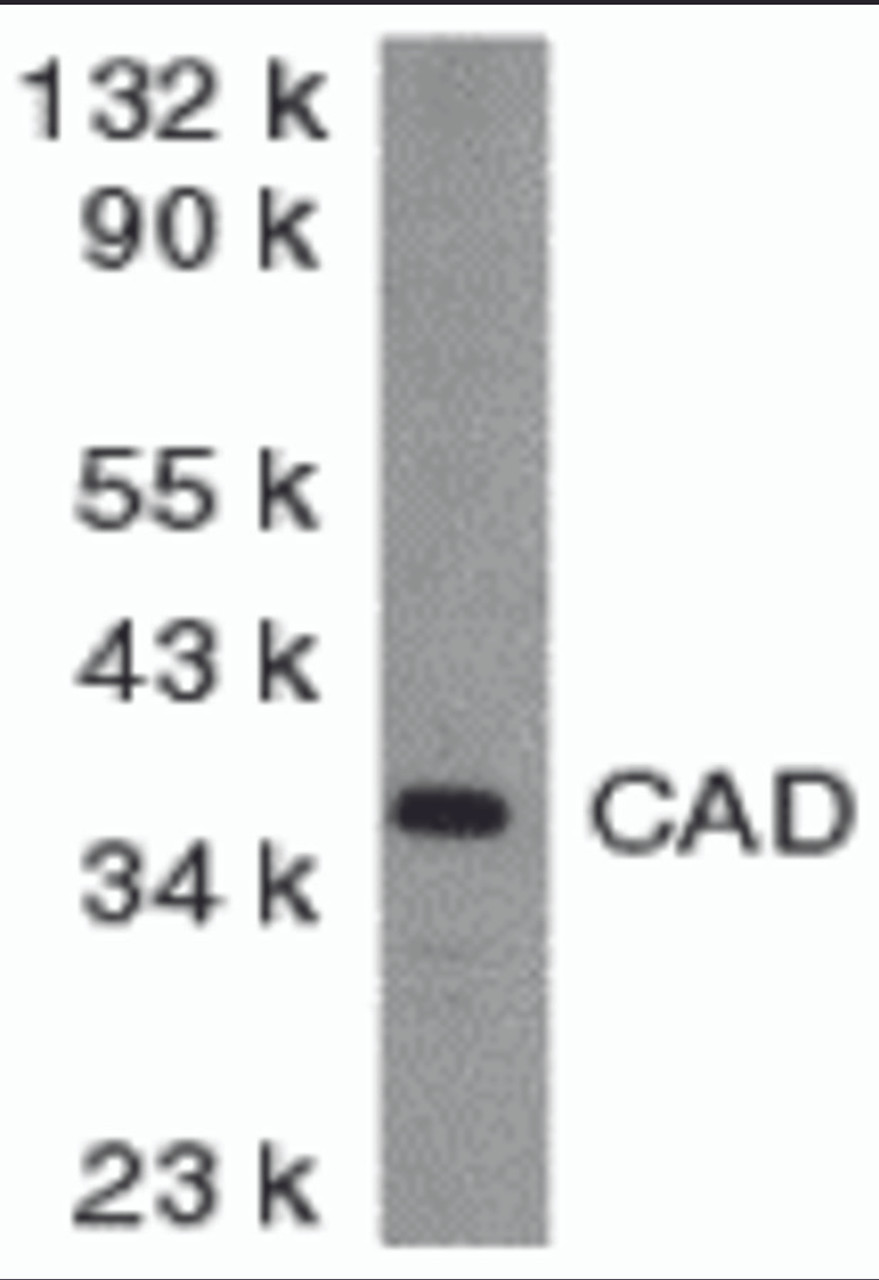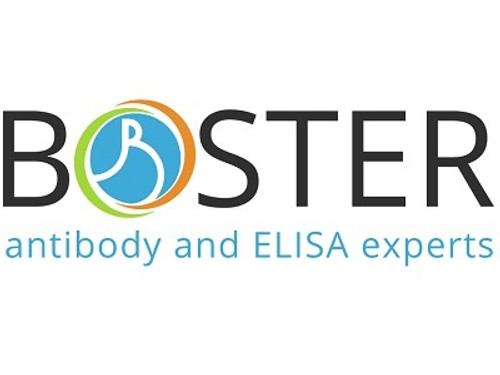Product Description
CAD Antibody | 2007 | ProSci
Host: Rabbit
Reactivity: Mouse, Rat
Homology: Predicted species reactivity based on immunogen sequence: Human: (83%) , Bovine: (78%)
Immunogen: CAD antibody was raised against a peptide corresponding to 17 amino acids near the center of murine CAD.
The immunogen is located within amino acids 190 - 240 of CAD.
Research Area: Apoptosis
Tested Application: E, WB, IHC-P, IF
Application: CAD antibody can be used for detection of CAD by Western blot at 2 μg/mL. A 40 kDa band should be detected. Antibody can also be used for immunohistochemistry starting at 5 μg/mL. For immunofluorescence start at 5 μg/mL.
Antibody validated: Western Blot in mouse samples; Immunohistochemistry in mouse samples and Immunofluorescence in mouse samples. All other applications and species not yet tested.
Specificiy: N/A
Positive Control 1: Cat. No. 1405 - Mouse Kidney Tissue Lysate
Positive Control 2: N/A
Positive Control 3: N/A
Positive Control 4: N/A
Positive Control 5: N/A
Positive Control 6: N/A
Molecular Weight: 40 kDa
Validation: N/A
Isoform: N/A
Purification: CAD Antibody is affinity chromatography purified via peptide column.
Clonality: Polyclonal
Clone: N/A
Isotype: IgG
Conjugate: Unconjugated
Physical State: Liquid
Buffer: CAD Antibody is supplied in PBS containing 0.02% sodium azide.
Concentration: 1 mg/ml
Storage Condition: CAD antibody can be stored at 4˚C for three months and -20˚C, stable for up to one year. As with all antibodies care should be taken to avoid repeated freeze thaw cycles. Antibodies should not be exposed to prolonged high temperatures.
Alternate Name: CAD Antibody: CAD, CPAN, 40kDa, DFF40, Didff, 5730477D02Rik, Cad, DNA fragmentation factor subunit beta, Caspase-activated deoxyribonuclease, CAD
User Note: Optimal dilutions for each application to be determined by the researcher.
BACKGROUND: CAD Antibody: Apoptosis is related to many diseases and induced by a family of cell death receptors and their ligands. Cell death signals are transduced by death domain containing adapter molecules and members of the caspase family of proteases. These death signals finally cause the degradation of chromosomal DNA by activated DNase. A mouse DNase that causes DNA fragmentation was identified recently and designated CAD (for caspase activated deoxyribonuclease) . The human homologue of mouse CAD was more recently identified by two groups independently and termed CPAN and DFF40. Human DFF45 and its mouse homologue ICAD are the inhibitors of CPAN/DFF40 and CAD, respectively. Upon cleavage of DFF45/ICAD by activated caspase, DFF40/CAD is released and activated and eventually causes the degradation of DNA in the nuclei. Activation of CAD/DFF40, which causes DNA degradation, is the hallmark of apoptotic cell death.
 Euro
Euro
 USD
USD
 British Pound
British Pound
 NULL
NULL












